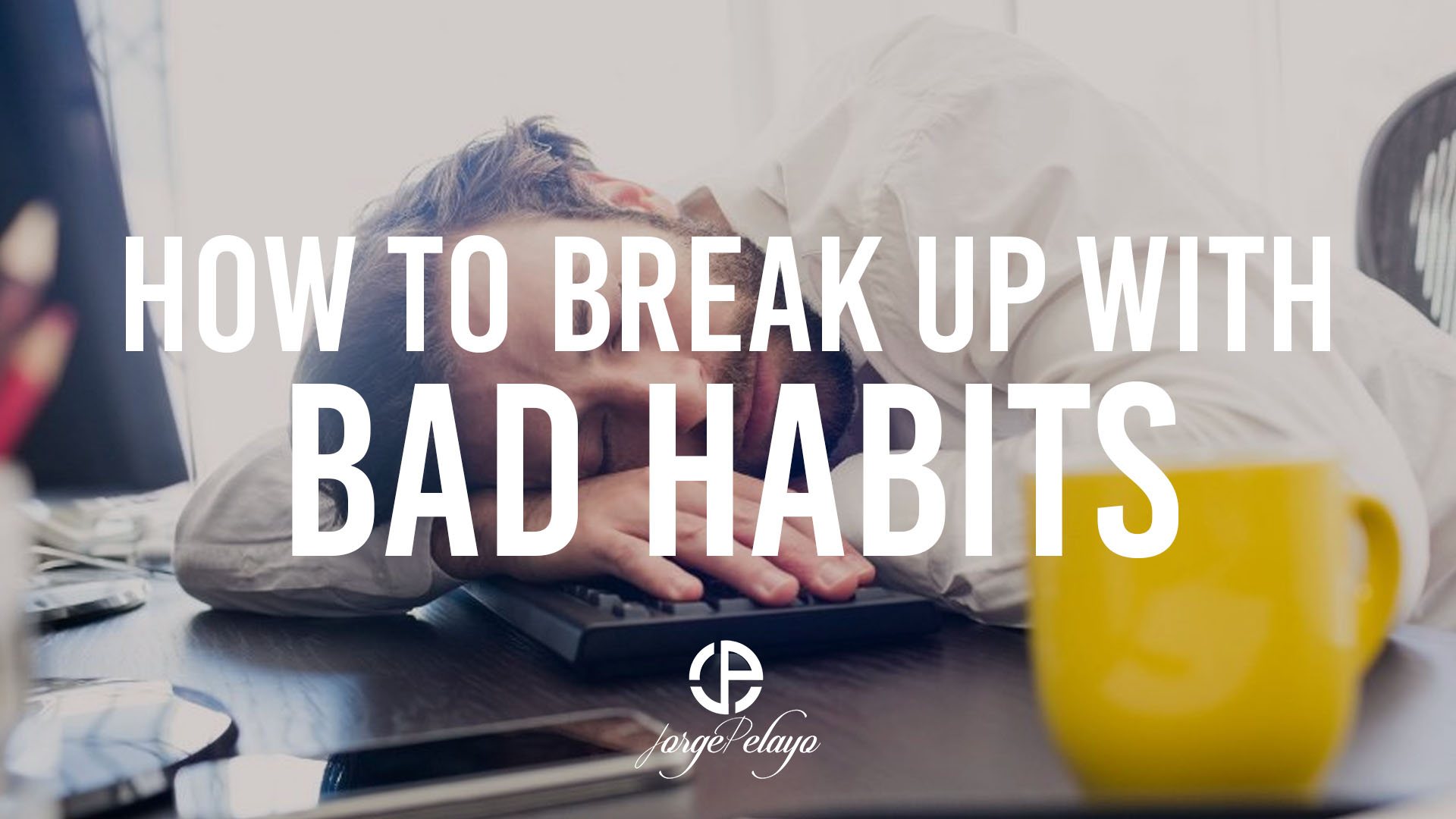How to Break up With Bad Habits
Here are three proven steps to get over bad habits once and for all.
1. Out of sight, out of mind.
After you’ve made up your mind to quit, and you’ve found your alternative, commit to quitting your bad habits by going mindless every time a bad habit trigger appears. Committing to change means that you can’t make excuses and you can’t give yourself any room to convince yourself why you can just skip it once. Don’t think whether you should do the bad habit or not, just don’t do it no matter what.
For example, if you want to eliminate your incessant slouching at work, you have to tell yourself that you aren’t going to slouch while you’re working no matter what. The alternative to slouching can be a new chair, change up your monitor height or even move your office around.
2. Be super aware of how often you performed a bad habit.
Write down how things are going with your commitment. It’s easy to lose track of progress if you don’t make a note of your behaviors.
You are bound to slip up when you are turning over a new leaf. Writing down your behaviors might reveal patterns related to these moments of weakness. If you can spot the pattern, you may be able to disrupt it. Furthermore, seeing evidence of progress is a great motivator.
3. Have a strict reward and punishment system.
Reward yourself when you stick with your commitment. Maybe you will allow yourself to take a five-minute dance break or eat a cookie with your lunch in exchange for not mindlessly chomping on snacks at your desk. Your reward doesn’t have to be costly, but it should be valuable to you. The only stipulation is that you can’t reward your good behavior with the bad habit.
Designate a consequence for engaging in the negative habit. The consequence doesn’t need to be emotionally damaging. It just needs to cause enough discomfort or inconvenience to make you think twice about falling into old patterns.
People have been doing this for decades with the “swear jar.” Every time they say a bad word, they have to sacrifice money to the jar. You could come up with your own version of the swear jar or find some other consequence that will motivate you to stay on the proper path. Maybe every day that you snack on candy at your desk, you have to take your friend out to a healthy lunch. Having to incur this extra cost and effort will keep you accountable.
Your system of rewards and consequences are transactions that can help you eliminate your bad habits and automate the good ones.
4. Train Yourself Like a Dog (for a Good Cause)
Ultimately, you’ll want to train yourself to do the right things the way that Pavlov’s dogs salivated automatically when they heard a bell ring. The dogs salivated (their routine) without thinking because they had been classically conditioned to associate the sound of the bell ringing (a trigger) with food (their reward).
Don’t let a fear of failure stand in your way. Even if you have been engaged in a bad habit for years, it is still possible to eliminate the unhealthy behavior. Know that it may not be easy at first, but eventually the good habit will become your natural response to the trigger. The commitment to break bad habits could lead you to a healthier and more successful future. The change can start today.

